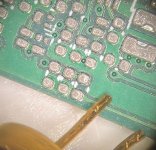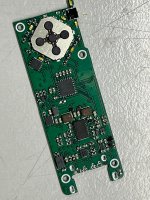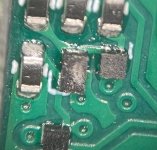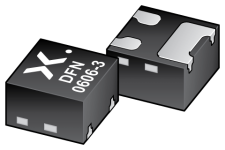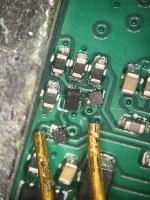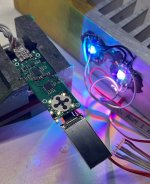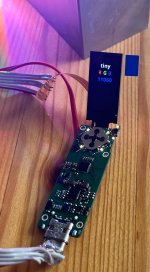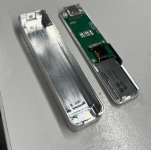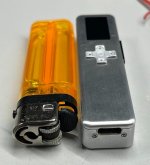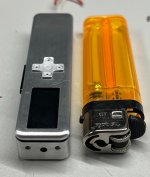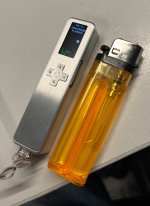Lets do an update.
I started programming, made the battery charging screen which gets shown while the unit is plugged into a USB-C charging source.

The screen is rather simple, it just shows a battery that slowly fills up and changes color to reflect battery state.
It also shows the current voltage of the cell. Not needed but interesting.

I spend a few hours making and testing a few keylock screens.
Nothing worse than having 500mW burn a hole in your pocket.
The unit turns on if the fire button is pressed. It than shows this screen:
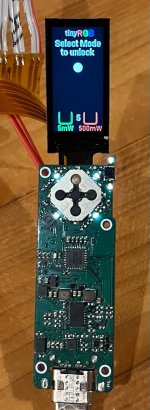
A timer (5 on this image) starts counting down. You have time to manuver the white ball into the pocket at the bottom of the screen.
The logic is: random key presses wont be able to hit the target accuratly before the timer runs out.
This also ensures that you only get the powerlevel you want. If you put the ball into the 5mW hole, the pointer will restrict itself to 5mW max output power.
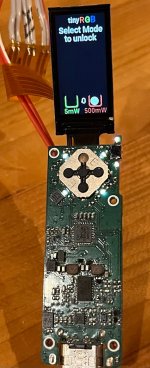
If you managed to do it before the timer runs out, you will get to the menu screen (which i still need to make).
From there on you will be able to select a few operation modes. Like RGB mode:
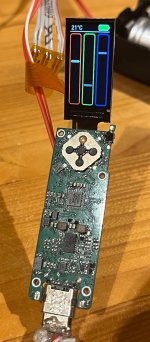
This mode shows three bars and let you choose a color based on the standard RGB system.
The D-Pad is used to select which color you want to adjust and you can move the silder with the up and down buttons.
I will also make a few other modes:
- Automatic -> configurable color changes
- HSV color selector
- Presets
- ?
(dont ask how i managed to mess up the UP button on the d-pad ... Its not meant to be pressed with pencils)




